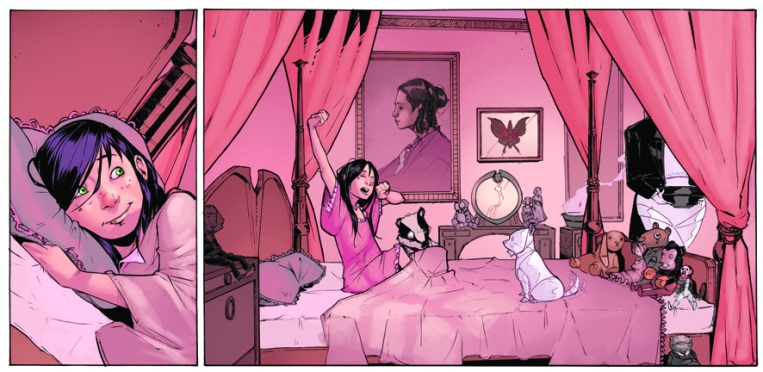Porcelain is the gothic tale of a young urchin’s longing for a father, and the morality of magic and science, set in a world comparable to our own but buried under years of snow. When Uncle opens his home to Child, the street urchin, he lets humanity into his life for the first time since the death of his wife Cassandra, but Child’s curiosity may be too much for him. Released by Improper Books, an independent UK publisher, Porcelain is the result of a collaboration between like-minded individuals with a love for fairy tales, magic and horror.
When Child is forced by the older street children to scale the walls of the “wizard’s” estate and steal as much as she could, she narrowly avoids a beating from the police, although she doesn’t know it yet. On the other side she encounters Gog and Magog, a pair of porcelain beasts with hints of polar bears, tigers and dogs, who are called off attack by a large, angry man; the owner of the estate. Child does the only thing she can think to do and lies: it’s utterly unconvincing but Uncle is charmed by the girl’s audacity and takes pity on her, inviting her into the house. Upon finding out she has no home to go to, he offers to take her on as his ward and shows her the secret behind his porcelain inventions. It feels like a classic horror story in the tradition of Frankenstein; a morality tale in which an isolated genius of science and magic tries to replicate humanity and save his love by creating porcelain life from the bone ash of hanged criminals.
Uncle creates a beautiful garden for Child, the only area of greenery she has ever seen, a magical garden of summer where she can play and dance and read, but the porcelain birds which sing around the garden are not what they seem, and Uncle’s use of corpses comes back to haunt him; no more so than when Child breaks her one rule of not entering the workroom and finds Cassandra. Like many horror classics, the question of life is explored, and the cold Dickensian backdrop adds the feel of an old-fashioned morality tale, and the poetry is reminiscent of Edgar Allan Poe’s work. The artwork is stunningly detailed in the characters’ expressions and it’s obvious that a lot of love went into showing the blossoming friendship between Uncle and Child. The porcelain creatures are fantastically creepy, no more so than when Uncle engineers some friends for Child that can only talk as dolls.
The back of the graphic novel is filled with conceptual designs for the characters and settings which provide a detailed insight into the process of developing characters and their facial expressions, as well as the thought processes behind the porcelain creatures such as the dog which echoes Child’s youth and enthusiasm. In his personal blog, Chris Wildgoose also talks about incorporating his brother’s expertise with Google Sketch Up to create 3D models of certain pieces of architechture or transport, which can be found on Tim Wildgoose’s website. As is becoming more and more usual in graphic novels, the back of the book includes several pieces of artwork inspired by the story, from the likes of PJ Holden and Alison Sampson which offer some alternative views of the world Chris Wildgoose and Benjamin Read have created.

I was lucky enough to catch a free preview of Porcelain at Thought Bubble 2012 and it is free to read online in many places, but the graphic novel itself is currently only available to buy online and in a limited number of independent comic book retailers, including Travelling Man stores. A heart-warming fairytale with just enough horror and magic to leave you with a lasting chill, Porcelain is full of beautiful and tragic moments brought together with the purest of storytelling.
Originally posted on the Travelling Man blog.
